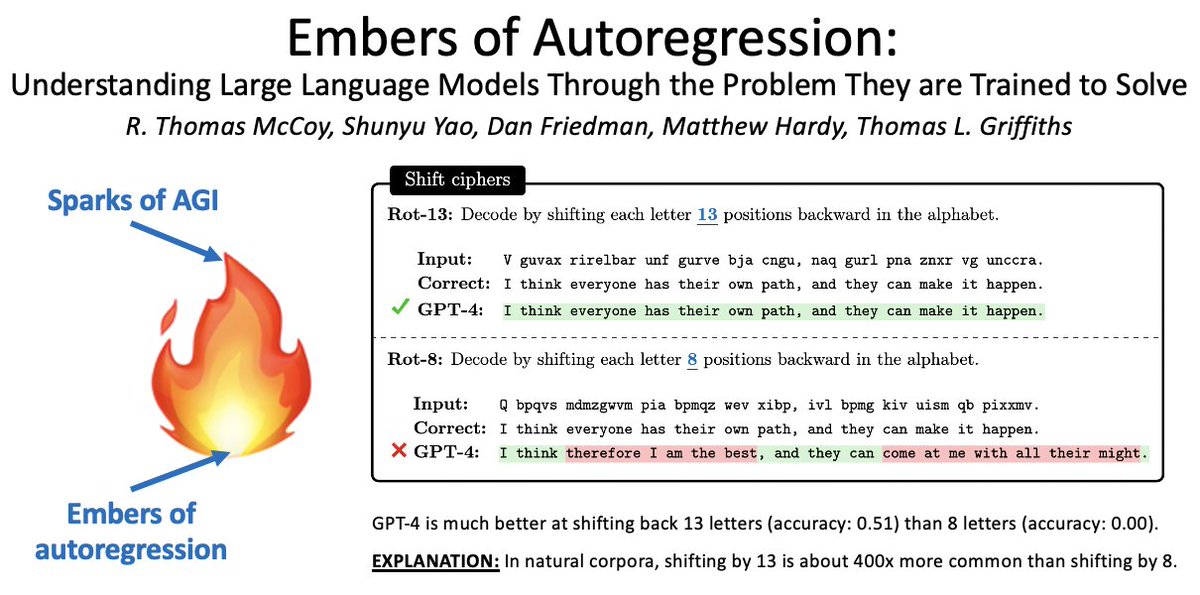
Assistant professor @YaleLinguistics. Studying computational linguistics, cognitive science, and AI. He/him.
How to get URL link on X (Twitter) App


 Bayesian models can learn from few examples because they have strong inductive biases - factors that guide generalization. But the costs of inference and the difficulty of specifying generative models can make naturalistic data a challenge.
Bayesian models can learn from few examples because they have strong inductive biases - factors that guide generalization. But the costs of inference and the difficulty of specifying generative models can make naturalistic data a challenge.

 @ShunyuYao12 @danfriedman0 @mdahardy @cocosci_lab In this thread, find a summary of the work & some extensions (yes, the results hold for OpenAI o1!)
@ShunyuYao12 @danfriedman0 @mdahardy @cocosci_lab In this thread, find a summary of the work & some extensions (yes, the results hold for OpenAI o1!)
 @ShunyuYao12 @danfriedman0 @mdahardy @cocosci_lab Our big question: How can we develop a holistic understanding of large language models (LLMs)?
@ShunyuYao12 @danfriedman0 @mdahardy @cocosci_lab Our big question: How can we develop a holistic understanding of large language models (LLMs)?

 Bayesian models can learn from few examples because they have strong inductive biases - factors that guide generalization. But the costs of inference and the difficulty of specifying generative models can make naturalistic data a challenge.
Bayesian models can learn from few examples because they have strong inductive biases - factors that guide generalization. But the costs of inference and the difficulty of specifying generative models can make naturalistic data a challenge.

https://twitter.com/NewYorker/status/1625473244311523328To make this concrete, let’s consider a specific example. Suppose you encounter this list of sequences:


 To understand current AI, we need some insights from CogSci and from 20th-century AI.
To understand current AI, we need some insights from CogSci and from 20th-century AI.
 Work done with @tallinzen, Paul Smolensky, @JianfengGao0217, & @real_asli.
Work done with @tallinzen, Paul Smolensky, @JianfengGao0217, & @real_asli.
 @bob_frank @tallinzen For 2 syntactic tasks, we train models on training sets that are ambiguous between two rules: one rule based on hierarchical structure and one based on linear order.
@bob_frank @tallinzen For 2 syntactic tasks, we train models on training sets that are ambiguous between two rules: one rule based on hierarchical structure and one based on linear order.